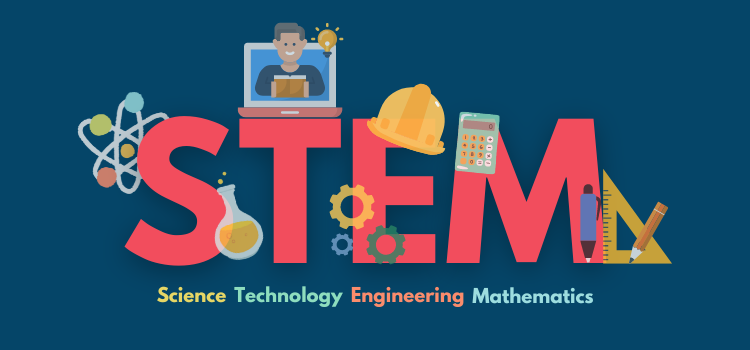
STEM (Science, Technology, Engineering, and Mathematics) has become a cornerstone in the quickly changing educational landscape, enabling pupils to flourish in the fast-paced world of innovation and technological breakthroughs.
This article dives deeply into the core of STEM education, examining different courses, the accompanying costs of tuition, and the bright futures that STEM students can look forward to.
What is STEM Education?
STEM education refers to courses in Science, Technology, Engineering and Mathematics. STEM courses focus on educating students in these four different disciplines. It has evolved and expanded to include a wide range of choices for students interested in pursuing careers in STEM.
Courses in STEM Education
Science Courses:
- Biology, Chemistry, Physics, Environmental Science
- Biotechnology, Pharmacology, Astrophysics
Technology Courses:
- Computer Science, Information Technology
- Software Engineering, Cybersecurity, Data Science
Engineering Courses:
- Mechanical Engineering, Civil Engineering, Electrical Engineering
- Aerospace Engineering, Chemical Engineering, Biomedical Engineering
Mathematics Courses:
- Pure Mathematics, Applied Mathematics
- Statistics, Actuarial Science
STEM education offers a diverse range of courses, allowing students to tailor their education to their interests and career aspirations.
Tuition Fees
The cost of pursuing STEM education varies based on factors such as the type of institution, location, and the course chosen. Generally, STEM programs in prestigious universities or private institutions tend to have higher tuition fees. On average, undergraduate STEM programs can range from $20,000 to $50,000 per year, while graduate programs may cost even more.
Scholarships and financial aid are often available to STEM students, helping to alleviate the financial burden. Many organizations and companies actively support STEM education by offering grants and scholarships to encourage talented individuals to pursue these fields.
Salaries and Career Paths
One of the most enticing aspects of STEM education is the potential for lucrative career paths. STEM graduates are in high demand across various industries, and their specialized skills often command competitive salaries. Let’s explore some examples:
Software Developers and Computer Scientists:
- Average Salary: $110,140 per year
- Career Path: Software developers and computer scientists design, develop, and implement software solutions, playing a crucial role in the tech industry.
Biomedical Engineers:
- Average Salary: $92,620 per year
- Career Path: Biomedical engineers work at the intersection of medicine and engineering, creating innovative medical devices and technologies to improve healthcare outcomes.
Data Scientists:
- Average Salary: $96,072 per year
- Career Path: Data scientists analyze and interpret complex data sets, helping organizations make informed decisions and predictions.
Mechanical Engineers:
- Average Salary: $90,160 per year
- Career Path: Mechanical engineers design and oversee the manufacturing of mechanical systems, including machinery, engines, and thermal devices.
STEM professionals are not only well-compensated but also play pivotal roles in driving innovation, solving global challenges, and shaping the future of technology.
Benefits of STEM Education
STEM education offers numerous benefits that extend beyond the classroom, shaping individuals for success in a rapidly evolving world. Here are key advantages:
- Critical Thinking: STEM fosters analytical and problem-solving skills, nurturing the ability to approach challenges with a logical mindset.
- Innovation: Students learn to think creatively, driving innovation and contributing to advancements in science, technology, and engineering.
- Real-world Application: STEM emphasizes hands-on learning, connecting theoretical knowledge to practical, real-world applications.
- Global Relevance: STEM skills are universally sought, preparing individuals for diverse, cross-cultural collaboration in a globalized workforce.
- High-Demand Careers: STEM graduates are in high demand, enjoying a wide range of lucrative career opportunities in various industries.
- Technological Literacy: STEM education equips individuals with the skills to navigate and thrive in a technology-driven society.
- Interdisciplinary Learning: Students gain a holistic understanding by integrating knowledge from science, technology, engineering, and mathematics.
- Economic Impact: STEM professionals contribute significantly to economic growth by driving innovation and fostering competitiveness on a global scale.
- Adaptability: STEM education instills adaptability, preparing individuals to embrace and lead in the face of evolving technologies and industries.
- Societal Problem-Solving: STEM education empowers individuals to address global challenges, from climate change to public health, through scientific inquiry and solutions.
In essence, STEM education propels individuals toward a future where their skills are not only in demand but also essential for addressing the complex challenges of our ever-changing world.
Conclusion
STEM education provides a wide range of courses that address the rapidly growing fields of science, technology, engineering, and mathematics, opening doors to a world of opportunities. Even if the cost of tuition may be an issue, the investment frequently pays off in the form of fulfilling jobs with market-rate pay.
The significance of STEM education is paramount in this age of rapidly advancing technologies. It not only gives people the abilities required for the vocations of the future, but it also cultivates an inquisitive, creative, and problem-solving mindset. A rewarding and wealthy future can be achieved for people who aspire to use invention and discovery to make a major effect on the world. STEM education does this.








